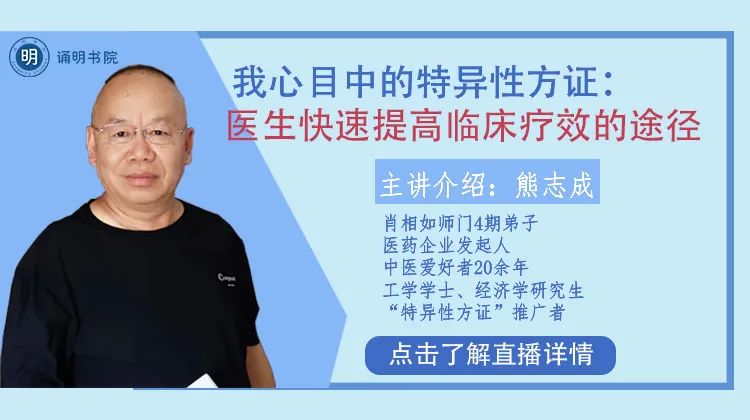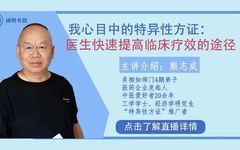Abstract:Li Li is a fourth-term disciple of Master Xiao Xiangru. Let’s take a look at his understanding and insights gained from studying exogenous diseases with his teacher.

Li Li: Theoretical Reconstruction of Exogenous Diseases in the Early Stage After a period of serious study, I have re-learned and organized the theoretical knowledge related to exogenous diseases, which has been very beneficial, particularly in the learning of foundational knowledge and the construction of a knowledge framework. The foundational theory of Traditional Chinese Medicine (TCM) is based on the holistic view of the unity of heaven and man, encompassing many different doctrines. Understanding any doctrine begins with studying various definitions and concepts. Therefore, I first addressed the theoretical aspects of exogenous diseases, including: principles of disease classification, definitions and research purposes of etiology, explanations of onset issues, definitions of exogenous diseases, the cold-heat problem in exogenous diseases, the concept and operational process of syndrome differentiation and treatment, seeking causes through symptom analysis, the concept of external pathogens, the concept of the six excesses (liù yín) and their historical evolution, contradictions and interpretations of related texts on febrile diseases, definitions and classifications of colds and related syndromes, the history and current status of misdiagnosis in exogenous diseases, reasons for misdiagnosis, how to distinguish between cold and heat in exogenous diseases, definitions of the eight principles (bā gāng) in syndrome differentiation, discussions on exterior-interior syndrome differentiation, definitions and related discussions on the differentiation of defensive qi (wèi qì), nutritive qi (yíng), and blood (xuè), and studies and reflections on acrid-cool exterior-releasing herbs and related formulas. This is a process of re-learning and re-thinking, which has yielded significant insights, clarifying many seemingly ambiguous concepts and allowing me to initially identify and pose some questions and attempt to answer them. For example, our classification of diseases is based on etiology and pathology; exogenous refers to etiology, while internal injury refers to pathology. In describing the process of syndrome differentiation and treatment, the first step is diagnosis, followed by analysis and evaluation of symptoms through various diagnostic methods, then determining the disease, and based on this, determining the syndrome, which then leads to a specific treatment plan. From the study of the above definitions, naturally, corresponding questions arise, namely, how do we establish a syndrome-based thinking in clinical practice? For instance, regarding the differentiation of cold and heat in exogenous diseases, to be honest, I was previously unclear whether this cold-heat referred to etiology or symptoms, completely lacking in thought. First, there is the issue of aversion to cold; what exactly is aversion to cold, under what circumstances does it occur, what are the symptoms of aversion to cold, what are its causes and mechanisms of development, how do we define and distinguish aversion to cold from aversion to wind and chills, what does it mean that a degree of aversion to cold indicates a degree of exterior syndrome, the issue of acrid-cool exterior-releasing herbs, and the essence of Yinqiao San (Yinqiao Powder) and Sangju Yin (Sangju Decoction), etc. Furthermore, regarding the understanding of the efficacy of Chinese herbs, we typically define them based on various clinical applications by historical sages and modern pharmacological studies. Once we delve deeper, we naturally find many areas lacking rigor, and how to analyze, judge, and make choices becomes a question, particularly which herbs’ efficacy cannot replace that of individual herbs. Of course, in studying and reflecting on the above concepts and definitions, we should also be aware of the characteristics of the TCM theoretical system itself, namely that every research based on inductive reasoning is, to some extent, partial. Different theoretical systems and doctrines have their own characteristics and perspectives, all attempting to interpret a holistic issue. Therefore, in our learning and clinical practice, it is a standard issue of needing both detail and the whole, achieving a kind of vague correctness. Through the above basic learning and reflection, I can further establish a foundational knowledge framework for the differentiation of exogenous diseases. This is a process of categorizing and organizing knowledge from different doctrines, training myself to place this foundational knowledge in appropriate positions from different levels and angles, thereby enhancing my ability to analyze clinical issues. For example, the teacher simplified the six excesses and miscellaneous qi into four excesses, and then proposed guiding principles for the diseases caused by the combination of the four excesses: When heat and cold excesses combine, if heat is predominant and cold is light, use Yinqiao San for treatment; if cold is predominant and heat is light, use Da Qinglong Tang (Major Green Dragon Decoction) or Jiuwei Qianghuo Tang (Nine-Herb Qianghuo Decoction) for treatment; When cold and dry excesses combine, use Shashen (Glehnia Root), Maidong (Ophiopogon), and Congchi Tang (Scallion and Licorice Decoction) for treatment; When heat and dry excesses combine, use Sangju Yin or Sangxing Tang (Mulberry and Apricot Decoction) for treatment; When cold and damp excesses combine, use Qianghuo Shengshi Tang (Qianghuo Decoction for Dampness) with Xiangru (Elsholtzia) and Huo Xiang (Agastache) for treatment; When heat and damp excesses combine, if heat is predominant and damp is light, use Baihu Tang (White Tiger Decoction) with Cangzhu (Atractylodes) for treatment; if damp is predominant and heat is light, use Xinjia Xiangru Yin (New Xiangru Decoction) for treatment. For example, through the analysis and study of the eight principles differentiation, I further recognized its meaning and flaws, realizing how shallow the past understanding was. For example, through studying the teacher’s summary of the differentiation of defensive qi, nutritive qi, and blood, I learned several points: the defensive pattern is not an exterior pattern; the initial stage of warm diseases is a lung heat pattern rather than an exterior pattern; the essence of the differentiation of defensive qi, nutritive qi, and blood is that qi and blood are two levels, similar in nature but different in degree; the essence of clearing heat and transforming qi is to clear both qi and blood, using Xijiao (Rhinoceros Horn), Xuanshen (Scrophularia), and Lingyangjiao (Antelope Horn) to clear blood heat, while clearing qi requires careful differentiation, using Bohe (Mint), Niubangzi (Burdock Seed), and Zhuye (Bamboo Leaf) for warm heat and nutritive qi, and adding Lugen (Reed Root) and Huashi (Talc) for damp heat and nutritive qi. Of course, for me, the greatest gain has been feeling the serious, rigorous, practical, and exploratory academic attitude of Master Xiao through learning, from the classics to questioning the classics. This is our model and example for learning, a continuous process of learning and thinking, a process of constant challenge and improvement, and even a small progress each day is sufficient.Li Li2023.03.05Note: Please follow medical advice for specific treatments and medications!This article is excerpted from: Master Xiao’s Lecture Hall, Author: Li Li.The cover image is sourced from Shetu Network.

You May Also Like, click to read the original text:
Huangqi Guizhi Wuwu Decoction for Treating Lumbar Spinal Stenosis: Experience Sharing
My Insights on Treating Exogenous Diseases – From Confusion to Enjoyment
One or Two Doses of Medicine to Resolve Pediatric Lung Heat Cough, Abdominal Pain, and Diarrhea

